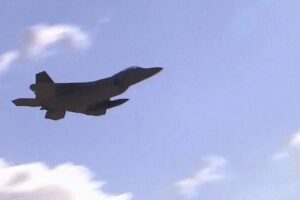Hsing Yun, the Taiwan-based founder of the Fo Guang Shan Buddhist monastic order, supported calls for China and Taiwan to “peacefully unify” and encouraged a reconciliation between Beijing and the exiled Tibetan government.
TAIPEI — Hsing Yun, who promoted Buddhism around the world but courted controversy with his pro-Beijing views despite being based in Taiwan, died at the age of 95 on Feb. 5. His death leaves hundreds of thousands of devoted followers mourning their revered religious leader and deprives China of a powerful propaganda tool.
Over decades that encompassed the Chinese civil war, the rule in Taiwan of Kuomintang dictator Chiang Kai-shek and eventually, Taiwanese democratization, Hsing Yun was known for his extraordinary work in philanthropy and education through his Buddhist organization Fo Guang Shan. The sect was founded in the southern Taiwanese port city of Kaohsiung, and became one of the most influential Buddhist institutions in the Chinese-speaking world.
Keen to expand his organization in China, Hsing Yun’s approach and politics stood in stark contrast to two other defining faith leaders in Asia: the Tibetan spiritual leader Tenzin Gyatso, known as the 14th Dalai Lama, and Catholic Cardinal Joseph Zen of Hong Kong, who is currently being tried over his involvement in a humanitarian fund.
Hsing Yun embraced the Chinese leadership despite the regime’s religious crackdown, and dismissed the Taiwanese identity. He once said that, “There are no Taiwanese in Taiwan. Who in Taiwan isn’t Chinese?” and that, “If you come and go on both sides of the [Taiwan] strait, the whole family will be unified.”
Beijing claims Taiwan as its own territory and refused to rule out an invasion, even though the island has never been ruled by Communist China. Those controversial remarks underlined criticism that, despite his popularity, Hsing Yun’s politics were increasingly anachronistic in modern Taiwan.
His pro-Beijing views reflected his desire to build a network of temples in China, which helped popularize Buddhism there after decades of anti-religion campaigns by the Communist government under Mao Zedong. He held several meetings with successive Chinese leaders Jiang Zemin and Xi Jinping.
“He was a product of his origins and of his generation, but also a religious figure who did not hesitate to dip his toes into the waters of politics, more often than not siding with the Kuomintang while always making sure to avoid doing or saying things that would anger Beijing,” said J. Michael Cole, a senior adviser at the U.S.-based International Republican Institute.
The abbot transformed and exported Chinese Buddhism. He established over 170 Fo Guang Shan chapters on five continents, and attracted more than 2,000 disciples and over a million devotees around the world. They gave generously. FGS assets are valued as high as $5 billion, according to research by Kendall Marchman, an associate professor of religion at the University of Georgia.
“If Taiwan Semiconductor Manufacturing Co., or TSMC, is Taiwan’s most successful multinational company, FGS is definitely Taiwan’s most successful multinational Buddhist organization,” said Jack Meng-Tat Chia, assistant professor of history and religious studies at the National University of Singapore. “Unlike Cardinal Zen and the Dalai Lama, Hsing Yun was driven by pragmatism, not any beliefs in democracy. He was willing to work with anyone who could advance his interest and organization.”
China’s Taiwan Affairs Office — a Chinese government agency responsible for relations with Taiwan — praised Hsing Yun for “firmly supporting ‘reunification’ and resolutely opposing ‘Taiwan independence.'”
But the Buddhist master was also revered by senior Taiwanese leaders who often opposed his views. President Tsai Ing-wen, Premier Chen Chien-jen and opposition KMT leader Eric Chu were among the thousands of mourners who gathered in Kaohsiung for his funeral.
Tsai awarded Hsing with a posthumous presidential citation in recognition of his “far-reaching impact and contributions to the state, society and religious life” of Taiwan.
Born as Lee Kuo-shen in 1927 in the eastern Chinese city of Yangzhou, he entered monastic life at the age of 12 and adopted the name Hsing Yun, meaning “nebula.” The young monk fled to Taiwan after the China Communist Party defeated Kuomintang forces in 1949. He spent years building a following and setting up a large monastery in 1967 in Kaohsiung’s Dashu district, which subsequently became the headquarters of the FGS.
From this base, Hsing Yun became a major figure in developing and popularizing “humanistic Buddhism” and extending its influence in China and the rest of the world.
“It was a kind of Buddhism that called upon the laity to ‘leave the world by entering the world’ — that is, pursuing their faith not by retreating from the world into monasteries but working to improve the world, creating a Pure Land on Earth,” said Richard Madsen, professor of sociology the University of California, San Diego.
His concept of humanistic Buddhism contributed to a shift in Chinese Buddhist practices from one that was ritual-centered and otherworldly to one that focused on the here-and-now through the practice of the Dharma and the promotion of Buddhist education and social welfare.
Hsing Yun and the FSG attracted the devotion of a broad swath of Taiwan’s rising middle classes at a time of political reforms.
“After martial law, this gave middle class people an outlet for their religious devotion and creative energies, a form that enabled them to embrace a modern form of Confucian and Buddhist traditions while working toward social harmony,” said Madsen.
While Hsing Yun focused on growing his Buddhist organization, he also seemed to sympathize with what many saw as China’s efforts to undermine Taiwan’s sovereignty.
“It is widely known that religion is one of the vectors that the CCP uses, in Taiwan and elsewhere, to conduct influence work, recruit potential allies, and so on,” noted Cole.
“His alignment with the CCP in such endeavors put him, along with his religious institution, increasingly at odds with the majority view among the people of Taiwan, who have little interest in being governed by the CCP,” he added.
Hsing Yun supported calls by both Beijing and the KMT for “peaceful unification” under “One China,” and was closely associated with the KMT, including serving on the party’s central committee.
He also encouraged reconciliation between Beijing and the exiled Tibetan government, and unsuccessfully urged China to befriend the Dalai Lama. But he also said, “I hope that the Dalai Lama will face [accept] ‘One China,’ and not forget that he is Chinese, so that China can accept him.”
Madsen noted that Hsing Yun stressed the need for a peaceful resolution of polarizing issues in Taiwan’s domestic politics. “In other places, religious devotion sometimes pours gasoline on such contentious issues, but Hsing Yun’s form of Buddhist devotion, overall, helped lower the temperature of Taiwan’s contentious politics.”
Beijing sought to use his funeral to score political points by proposing to send a 38-member official delegation co-headed by former Chinese State Administration for Religious Affairs chief Ye Xiaowen, who was notorious for cracking down on the Falun Gong sect and other religious groups. But a row with Taiwan led to the Chinese delegation boycotting the funeral.
Chia said that Hsing Yun should be regarded as “a diplomatic monk” or “Buddhist diplomat.”
“Hsing Yun is a lot more complex than being a ‘pro-unification monk.’ He wanted close ties with China in order to revive Buddhism there, especially in his ancestral temples. He also wanted to expand his Fo Guang Shan movement across China, and knew that it wouldn’t be possible without the support and blessings of the Communist leaders,” Chia explained.
Hsing Yun’s political pragmatism is best illustrated by his dramatic embrace of Tsai during her presidential campaign in 2015, months before she was swept into power and became Taiwan’s first female head of state. During her visit to Kaohsiung, he compared her to Taiwan’s top goddess and patroness of the sea by describing her as “an incarnation of Mazu” who would “definitely get elected.”
Source: NIKKEI















